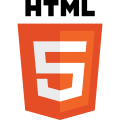Introduction to HTML
– HTML is the standard markup language for web content.
– It defines the structure and content of web pages.
– HTML is often used in conjunction with CSS and JavaScript.
– Web browsers render HTML documents into multimedia web pages.
– HTML elements are the building blocks of web pages.
HTML Elements
– HTML elements are written using tags enclosed in angle brackets.
– Tags like and directly introduce content into the page.
– Other tags like
and
History of HTML
– HTML was proposed by Tim Berners-Lee in 1989.
– The first publicly available description of HTML was in 1991.
– HTML was influenced by SGML and early text formatting languages.
– HTML was formally defined as an application of SGML by the IETF.
– HTML 2.0 was the first HTML specification treated as a standard.
HTML Version Timeline
– HTML 2.0 was published in November 1995.
– HTML 3.2 was published as a W3C Recommendation in January 1997.
– HTML 4.0 was published as a W3C Recommendation in December 1997.
– HTML 4.01 was published as a W3C Recommendation in December 1999.
– HTML5 was completed and standardized in October 2014.
HTML5 Features
– HTML5 introduced new elements like
The HyperText Markup Language or HTML is the standard markup language for documents designed to be displayed in a web browser. It defines the content and structure of web content. It is often assisted by technologies such as Cascading Style Sheets (CSS) and scripting languages such as JavaScript.
 The official logo of the latest version, HTML5 | |
| Filename extension |
|
|---|---|
| Internet media type |
text/HTML |
| Type code | TEXT |
| Uniform Type Identifier (UTI) | public.html |
| Developed by |
|
| Initial release | 1993 |
| Latest release | |
| Type of format | Document file format |
| Container for | HTML elements |
| Contained by | Web browser |
| Extended from | SGML |
| Extended to | XHTML |
| Open format? | Yes |
| Website | html |
Web browsers receive HTML documents from a web server or from local storage and render the documents into multimedia web pages. HTML describes the structure of a web page semantically and originally included cues for its appearance.
HTML elements are the building blocks of HTML pages. With HTML constructs, images and other objects such as interactive forms may be embedded into the rendered page. HTML provides a means to create structured documents by denoting structural semantics for text such as headings, paragraphs, lists, links, quotes, and other items. HTML elements are delineated by tags, written using angle brackets. Tags such as <img> and <input> directly introduce content into the page. Other tags such as <p> and </p> surround and provide information about document text and may include sub-element tags. Browsers do not display the HTML tags but use them to interpret the content of the page.
HTML can embed programs written in a scripting language such as JavaScript, which affects the behavior and content of web pages. The inclusion of CSS defines the look and layout of content. The World Wide Web Consortium (W3C), former maintainer of the HTML and current maintainer of the CSS standards, has encouraged the use of CSS over explicit presentational HTML since 1997.[update] A form of HTML, known as HTML5, is used to display video and audio, primarily using the <canvas> element, together with JavaScript.
1912 NW 143rd Ave #24,
Portland, OR 97229, USA